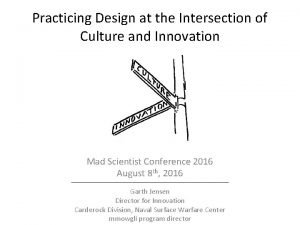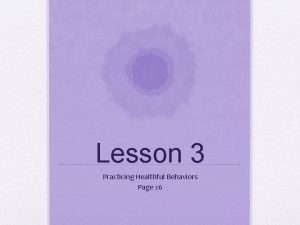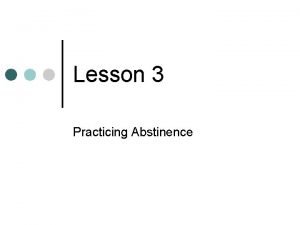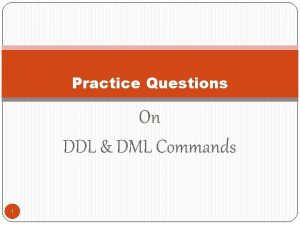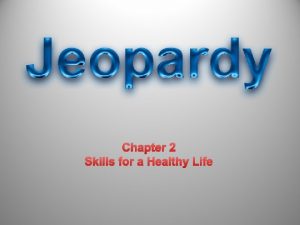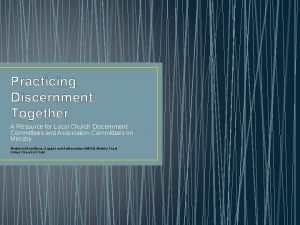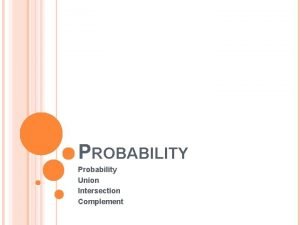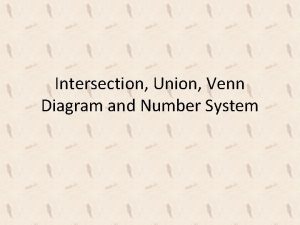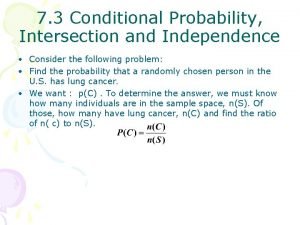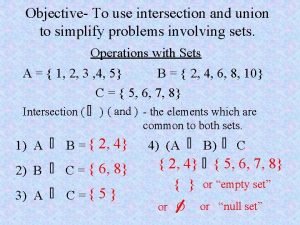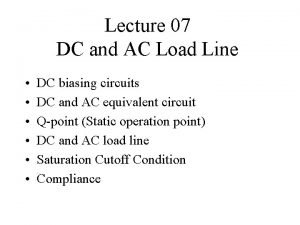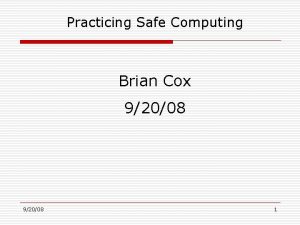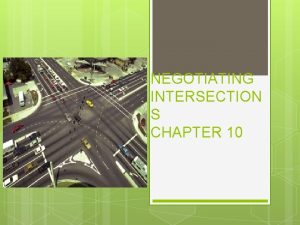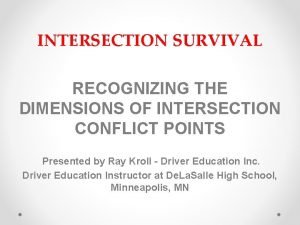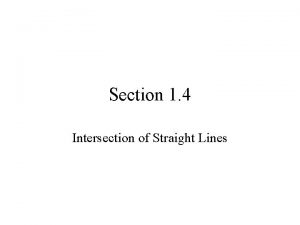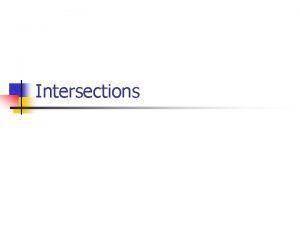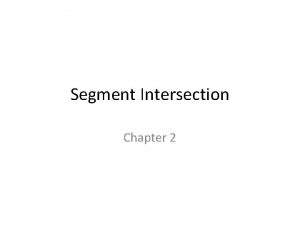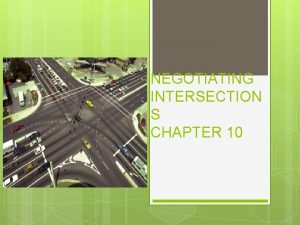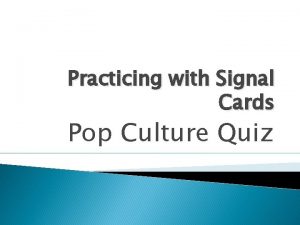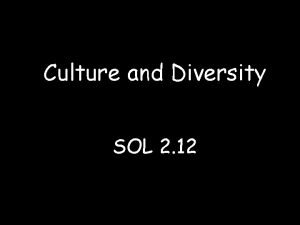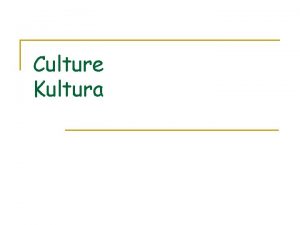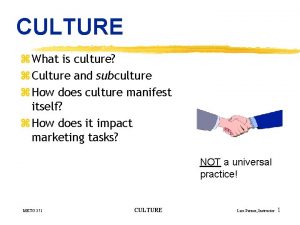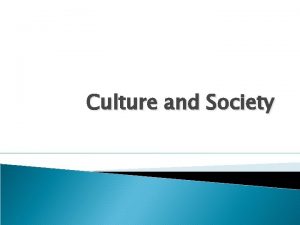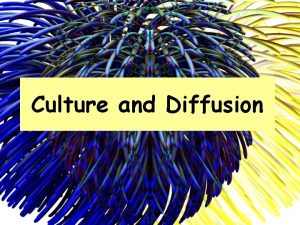Practicing Design at the Intersection of Culture and































- Slides: 31

Practicing Design at the Intersection of Culture and Innovation Mad Scientist Conference 2016 August 8 th, 2016 Garth Jensen Director for Innovation Carderock Division, Naval Surface Warfare Center mmowgli program director

Practicing Design at the Intersection of Culture and Innovation Mad Scientist Culturalist Conference 2016 August 8 th, 2016 Garth Jensen Mad Culturalist

The Default View of Innovation Possible Infeasible Accepted SCIENCE TECHNOLOGY Marketplace Feasible Rejected Impossible innovation as the invention of new things or new ways of doing things

A More Complete View Innovation as a Social (i. e. Human Centric) Phenomenon* Unimaginable Possible Infeasible Accepted CULTURE SCIENCE TECHNOLOGY Marketplace Imaginable Impossible Feasible Rejected Adapted from the work of Gary Markovits , Pierre Levy, Peter Denning, Marina Gorbis

Adding Dynamic Feedback Unimaginable Possible Infeasible Accepted CULTURE SCIENCE TECHNOLOGY Marketplace Imaginable Impossible Feasible Rejected

Stop Here for 5 Minute Presentation Remaining Slides Are To Be Used If Needed During Q&A Session

An Operational Definition of Culture ……a collective phenomena…… ……. an emergent property resulting from…… …. . the systematic interplay between four elements

An Operational Definition of Culture ……a collective phenomena ……. an emergent property resulting from…… …. . the systematic interplay between four elements SHARED TACIT KNOWLEDGE COLLECTIVE EXPLICIT KNOWLEDGE UNDERLYING SOCIAL NETWORK ACCEPTABLE BEHAVIOR PATTERNS

An Operational Definition of Culture • • • Mental Models Analogies Metaphors Paradigms Stories/Narrative • • Craft Skills Knowhow Undiscussables SHARED TACIT KNOWLEDGE COLLECTIVE EXPLICIT KNOWLEDGE UNDERLYING SOCIAL NETWORK ACCEPTABLE BEHAVIOR PATTERNS

An Operational Definition of Culture • • • Mental Models Analogies Metaphors Paradigms Stories/Narrative • • Craft Skills Knowhow Undiscussables SHARED TACIT KNOWLEDGE COLLECTIVE EXPLICIT KNOWLEDGE UNDERLYING SOCIAL NETWORK ACCEPTABLE BEHAVIOR PATTERNS • • • Written policies Contracts Guidelines Process descriptions Tools Technologies Equipment Facilities Business Rules

An Operational Definition of Culture Mental Models Analogies Metaphors Paradigms • • Stories/Narrative • • • Craft Skills Knowhow Undiscussables SHARED TACIT KNOWLEDGE COLLECTIVE EXPLICIT KNOWLEDGE UNDERLYING SOCIAL NETWORK ACCEPTABLE BEHAVIOR PATTERNS • • • Practices which implement policy Social behaviors Trust, reliability, truth, conviction Patterns of Collaboration Social Norms • • • Written policies Contracts Guidelines Process descriptions Tools Technologies Equipment Facilities Business Rules

An Operational Definition of Culture • • • Mental Models Analogies Metaphors Paradigms Stories/Narrative • • Craft Skills Knowhow Undiscussables SHARED TACIT KNOWLEDGE How Do Policies, Practices Affect the Health of the COLLECTIVE UNDERLYING Network? EXPLICIT SOCIAL • Growth v. Decline KNOWLEDGE NETWORK • Stable v. Unstable • Bridges & Long Links • Connected v. Unconnected • Inclusive v. Exclusive ACCEPTABLE • Dense v. Thin BEHAVIOR PATTERNS The Underlying Social Network as a form of Commons • Practices which implement policy • Social behaviors • Trust, reliability, truth, conviction • Patterns of Collaboration • Social Norms • • • Written policies Contracts Guidelines Process descriptions Tools Technologies Equipment Facilities Business Rules

Where Does Human Centered Design/ Design Thinking Fit In? “Everyone designs who devises courses of action aimed at changing existing situations into preferred ones”……. Herbert Simon, Nobel Laureate in Economics Looking: Observing Human Experience Understanding: Analyzing Challenges and Opportunities Making: Envisioning, Prototyping and Implementing Future Possibilities we realized that we were in the business of Designing Cultural Interventions

Designing a Cultural Intervention

From Systems Thinking: Mental Models and The Principle of Leverage Increasing Leverage

Deeply ingrained assumptions, generalizations, or internal images that influence how we understand the world and how we take action Representations of reality that we carry in our heads Necessary simplifications……. . a map of the world Our Mental Models determine how we make sense of the world, how we organize and take in information and also how we take action • A type of “filter” on the “data” we take in • Einstein: our theories determine what we measure

Often we are not consciously aware of our Mental Models or their effects on behavior Mental Models usually operate at the tacit level – below the level of awareness The issue is not whether our Mental Models are “right” or “wrong” – by definition all models are simplifications • All models are wrong, some are useful • We need Mental Models to survive and operate in the world. To this extent, they are useful. • However, our Mental Models can also limit us to familiar ways of thinking and acting The issue is whether our Mental Models remain below the level of awareness and thus remain unexamined and unchallenged

Why This Matters Sometimes, The Best Ideas Fail To Get Put Into Practice • New insights often fail to get put into practice because they conflict with our existing Mental Models • The real leverage lies in learning how to manage and being intentional about managing our Mental Models • Surfacing, testing, making EXPLICIT, that which is currently TACIT

A Working Definition of Culture • • Mental Models Analogies Metaphors Paradigms • • Craft Skills Knowhow Undiscussables SHARED TACIT KNOWLEDGE How Do Policies, Practices Affect the Health of the COLLECTIVE UNDERLYING EXPLICIT SOCIAL Network? KNOWLEDGE NETWORK • Growth v. Decline • Stable v. Unstable • Bridges & Long Links • Connected v. Unconnected ACCEPTABLE • Inclusive v. Exclusive BEHAVIOR • Dense v. Thin PATTERNS The Underlying Social Network as a form of Commons • Practices which implement policy • Social behaviors • Trust, reliability, truth, conviction • Patterns of Collaboration • Social Norms • • • Written policies Contracts Guidelines Process descriptions Tools Technologies Equipment Facilities Business Rules

The Underlying Social Network D A C Individuals – Possess the tacit knowledge Networks – Enable the opportunity to share Challenges – Provide the motivation to share B Trust – Determines the willingness to share The Underlying Social Network creates and bounds the organization’s social capital Social capital is the stock of active connections among people: the trust, mutual understanding, and shared values and behaviors that bind the members of human networks and communities and make cooperative action possible. “In Good Company” - Cohen & Prusak

The Role of Network Structure • Structural links are paths by which knowledge or technical expertise flows formally • Relational links are social interactions built on inter-personal trust • Organizations are socio-technical networks • Both types of links are necessary

What Do We Mean By Design? “Everyone designs who devises courses of action aimed at changing existing situations into preferred ones”……. Herbert Simon, Nobel Laureate in Economics Looking: Observing Human Experience Understanding: Analyzing Challenges and Opportunities Making: Envisioning, Prototyping and Implementing Future Possibilities Iterative and Recursive…………………. NOT……………. . Linear and Serial

Designing Your Cultural Intervention Start Anywhere on the Culture Wheel Mental Models • Do We Understand The Current Mental Model? • Can We Articulate It and Make It Explicit? • Does Our Cultural Intervention Conflict With the Current Mental Model? • If So, What Needs To Change About The Current Mental Model? The Underlying Social Network: • Does this Intervention support social networks that • Grow organically? • Motivate members? • Remain stable over time? Expand Your Definition of Prototype • Policy Can Be A Prototype • Pilots/Prototypes De-Risk A “Radical” Idea In the Eyes of Decision Makers • Prototypes Elicit Tacit Knowledge from End Users • What Is the Minimum Viable Prototype for My Cultural Intervention? • How Soon Can I Pilot It? At What Scale? • What Information Would I Collect Around the Pilot? • Cheap Experiments Are Worth More Than Good Ideas

A Running List of Cultural Interventions Education and Training: Since February 2015 We Have Sent • 25 People to OPM-Human Centered Design Course • Two People to RISD/State Dept Bootcamp for Design + Public Policy • Two People to Inaugural White House Interagency Meeting on Design + Public Policy What Those People Have Done • Digital-to-Done: Investment Strategy (results briefed to senior leadership) • Applying Boyd’s OODA Loop to Organizational Decision Making (initiated, partially scaled) • A Longitudinal Study of the New Hire Bridge Program (initiated, piloted) • Addressing the Non-Linear Cost of Bank Card Compliance (initiated) • A Systems Dynamics Based Dashboard for Business Processes (initiated) • Using milsuite for Technical and Administrative Collaboration (initiated, piloted, scaled, and recognized for excellence outside the Command) • Adapting the “Shark Tank” Model for Internal S&T Investment (initiated, piloted) • Developing a Human Centered Design Toolkit for the Workforce (initiated) • Co-developing an Advanced Warfighting Concept using Virtual Worlds (prototyped) • Innovation Café: “How Might We Measure Innovation at Carderock? ” (initiated, scaled) • Formulating a Long Range S&T Plan (in process, using the Innovation Café model) • Big Data: What It Affords Us/What It Requires of Us (still in process) • Academic Outreach Day (event conducted, results being processed) • Two Submissions Published at White House Interagency Meeting on Design + Public Policy



A More Hands On Approach : All Projects At every check-in we will be pushing you to think through • Who is/are my end-user(s)? Who are my stakeholders? How well do I know their needs? Articulated and unarticulated? How can I get to know them/their needs better? • What would a minimum viable prototype look like that I can place in their hands and exercise? • How soon can I do that? How many times can I do that? • Expand your definition of prototype • Use the prototype to produce learning and to elicit tacit knowledge

Serious Play and A Culture of Prototyping Michael Schrage Forward, Tom Peters • Central thesis: organizations manage themselves by their prototypes. • Will we get more value from better managing our innovation process to get a prototype? Or from better using our prototype to manage our innovation process? • Innovative prototypes generate innovative teams • Good prototypes invite dialogue versus truncating debate…… Preface • Not enough to have a brilliant idea…have to be able to demo them. Have to get people to want to play with them. • You know you have a good idea when people go beyond compliments and start suggesting ways to make it better, or when sponsors can use your demo as a platform for their own work. • The key to successful collaboration is the creation and management of shared space. (DIAGRAM). Transactional model of comms vs collaborative model of comms. • Prototypes as a form of shared space • Your prototyping culture shapes your innovation processes • The nouns shape the verb • Innovation is more social than personal, a by-product of how well we play with others. Behavior, not knowledge drives innovation.

Serious Play and Culture of Prototyping, p 2 Preface (continued) • A journey from ethnography to ethology • Our brains are wired as much for the manipulation of social relationships as for management of rational thought (Robin Dunbar and other evolutionary anthropologists) • How prototypes are designed and used are functions as much of arational human interactions, as they are a product of rational analyses. • This book is not a plea for more rational management of modeling…. • Serious play as a core competence. Treating prototypes as conversation pieces. • From Fierce Conversations, Susan Scott: the conversation is the relationship • From Leaders make the future: Commons Creating (i. e. shared space): the ability to seed, nurture and grow shared assets that can benefit other players – and sometimes allow competition at a higher level. Commons creating is the ultimate future leadership skill. New commons are shared resources that create platforms for generating wealth and value.

Serious Play and Culture of Prototyping, p 3 Overview • When talented musicians improvise, you don’t look inside their minds, you listen to what they play. When talented innovators innovate, you don’t listen to the specs they quote, you look at the models they have created. • The notion that innovations can be studied or analyzed into existence flies in the face of history and fact • Models, prototypes and simulations are the most important media for innovation • Changing the economics of play transforms the economics of innovation. And when innovation economics change, so do individual and institutional behaviors. Play is more about behavior than about thought • Models and the user interactions with the prototype often generate results utterly at odds with the assumptions embedded in them. They can be engines of surprise. • We shape our models and then our models shape us.

Naive Rationalism, Taleb on page 348 of Anti-Fragile Let me repeat the argument here in one block to make it clearer: Evolution proceeds by undirected, convex bricolage or tinkering, inherently robust, i. e. with the achievement of potential stochastic gains thanks to continuous, repetitive, small, localized mistakes. What we have done with top-down, command control science has been exactly the reverse: interventions with negative convexity, i. e. the achievement of small but certain gains through exposure to massive potential mistakes. Our record of understanding risks in complex systems is pitiful.
 Practicing design
Practicing design Practicing healthful behaviors
Practicing healthful behaviors Chapter 8 lesson 3 practicing abstinence
Chapter 8 lesson 3 practicing abstinence Dml commands
Dml commands The life skill using community resources means:
The life skill using community resources means: Strythio translation
Strythio translation Practicing discernment
Practicing discernment Multi leg intersection
Multi leg intersection What is cultural relativism
What is cultural relativism Continuous culture and batch culture
Continuous culture and batch culture American vs indian culture
American vs indian culture Stab and stroke culture
Stab and stroke culture Folk culture and popular culture venn diagram
Folk culture and popular culture venn diagram Leisure
Leisure Anaerobic media
Anaerobic media Homework due today
Homework due today Anaerobic gaspak
Anaerobic gaspak Carpet culture microbiology
Carpet culture microbiology Surface culture deep culture and esol
Surface culture deep culture and esol Sociologists define a symbol as
Sociologists define a symbol as Batch culture vs continuous culture
Batch culture vs continuous culture Collectivistic cultures
Collectivistic cultures What is a subculture
What is a subculture Adaptive culture from inert culture
Adaptive culture from inert culture Laying the foundation for a quality culture
Laying the foundation for a quality culture Probability union and intersection
Probability union and intersection Venn diagram number system
Venn diagram number system Intersection of solids cone and cylinder
Intersection of solids cone and cylinder Independence probability formula
Independence probability formula Name the intersection of line qz and segment wu
Name the intersection of line qz and segment wu How to simplify unions and intersections
How to simplify unions and intersections The point of intersection of dc and ac load lines is called
The point of intersection of dc and ac load lines is called
